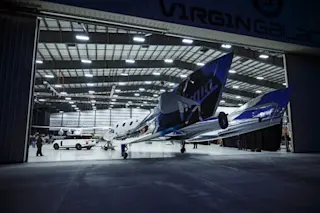Virgin Galactic's SpaceShip Two, the VSS Unity, is prepared to wow crowds during its 2016 naming ceremony in California. (Credit: Land Rover MENA) Virgin Galactic, one of the companies aiming to become the first to send astronauts into space, is planning to put its SpaceShipTwo vehicle through its next phase of testing starting as early as Thursday, December 13. It will be the fourth powered flight for the vehicle, named VSS Unity, and the first since its successful July 26 flight, which reached a peak altitude of 32 miles (52 kilometers). Now, the company is aiming higher, further, and faster — this next round of tests will “[expand] the envelope for altitude, air speed, loads, and thermal heating. We also plan to burn the rocket motor for durations which will see our pilots and spaceship reach space for the first time,” the company said in a statement on their website. ...
Virgin Galactic May Reach Space This Week
Virgin Galactic's SpaceShip Two, VSS Unity, prepares for its next test aimed at reaching the 50-mile altitude threshold.
More on Discover
Stay Curious
SubscribeTo The Magazine
Save up to 40% off the cover price when you subscribe to Discover magazine.
Subscribe













